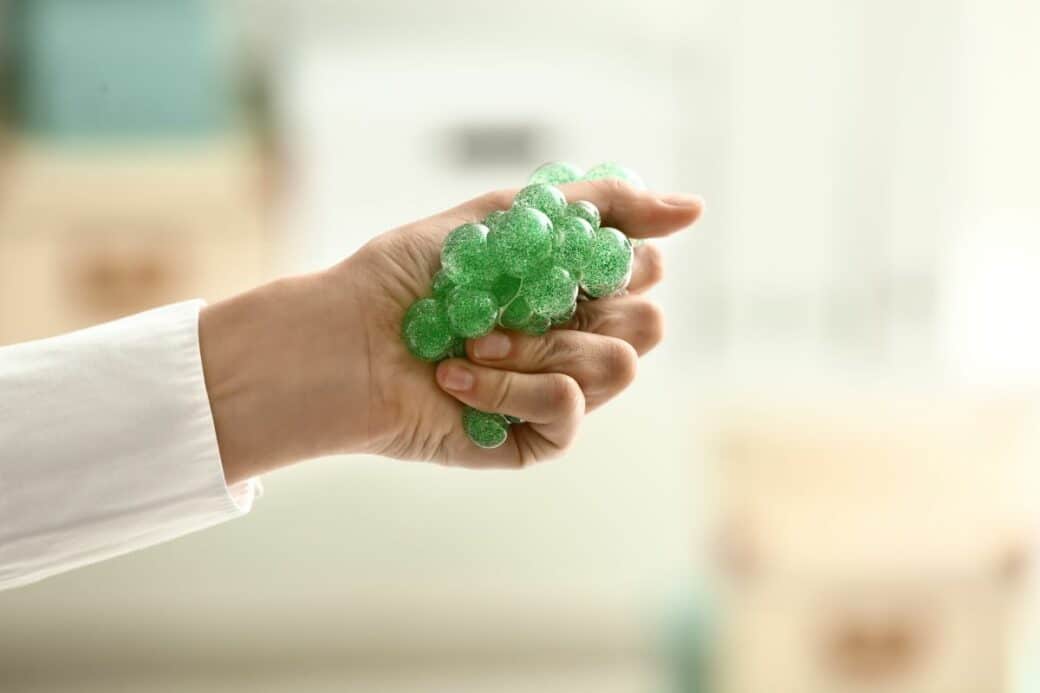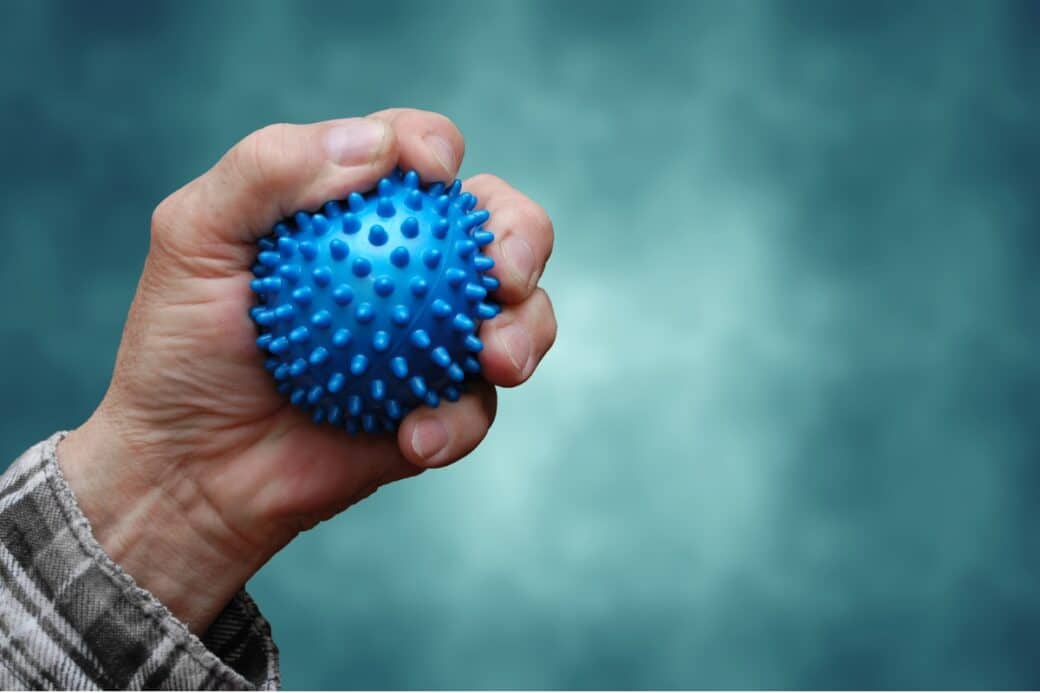In this article, you will explore the potential connection between stress balls and the development of cancer. It’s no secret that stress balls have become increasingly popular for relieving stress and promoting relaxation. However, recent concerns have arisen regarding the safety of these stress-relieving tools. Join us as we delve into the scientific evidence and expert opinions to shed light on whether stress balls could pose any risks to your health. Stay tuned to find out the truth behind this question: can stress balls cause cancer?

Can Stress Balls Cause Cancer: Understanding Stress Balls
What are stress balls?
Stress balls are small, handheld objects designed to provide a therapeutic tactile experience for individuals experiencing stress or tension. They are meant to be squeezed, rolled, or manipulated in the hands, offering a sense of physical release and relaxation. These soft, pliable objects are commonly used as stress relief tools in a variety of settings, including offices, classrooms, and homes.
Common materials in stress balls
Stress balls are typically made of various materials, each with its own level of firmness and texture. Some of the common materials used in stress balls include foam, gel, and rubber. Foam stress balls have a soft and spongy texture, while gel-filled stress balls offer a more flexible and squishy feel. Rubber stress balls, on the other hand, are firm and resilient, providing a satisfying resistance when squeezed.
How stress balls are used
Stress balls are used by squeezing or manipulating them with your hand and fingers. This repetitive motion can help to relieve muscle tension, reduce stress levels, and improve focus and concentration. Using a stress ball can promote relaxation by engaging the muscles in your hand and forearm, releasing built-up tension. Additionally, the rhythmic squeezing action can be a simple and effective way to redirect nervous or anxious energy.
Exploring the Link Between Cancer and Stress Balls
Existing research on stress balls and cancer
While stress balls have long been hailed for their stress-relieving benefits, concerns have been raised about the potential link between stress balls and cancer. However, it is important to note that there is currently limited scientific evidence supporting such a link. Existing research on this topic is scarce, and more studies are needed to draw concrete conclusions regarding the association between stress balls and cancer.
Potential carcinogens in stress balls
One aspect that has prompted concern regarding the potential cancer risk of stress balls is the presence of certain chemicals in their composition. Some stress balls may contain materials or additives that have been identified as potential carcinogens. These hazardous substances can include phthalates, a group of chemicals commonly used in the production of plastics. It is crucial to understand the chemicals found in stress balls and their potential health implications.

Chemicals Found in Stress Balls
Types of plastics used in stress balls
Stress balls are often made from various types of plastics, including polyurethane, polyethylene, and PVC (polyvinyl chloride). These plastics offer different levels of flexibility and durability, contributing to the overall quality and feel of the stress ball. Understanding the types of plastics used in stress balls can play a role in assessing the potential health risks associated with their use.
Harmful chemicals present
Certain chemicals used in the manufacturing process of stress balls have been found to have potential health risks. Phthalates, in particular, have raised concerns due to their potentially hazardous effects. These chemicals can migrate from the stress ball and be absorbed through the skin, ingestion, or inhalation. Research has shown that exposure to high levels of phthalates can have adverse effects on the reproductive system, liver, kidneys, and lungs.
Understanding phthalates in stress balls
Phthalates are a group of chemicals primarily used to soften plastics and increase their flexibility. They are commonly found in a wide range of products, including toys, cosmetics, and plastic packaging. In stress balls, phthalates are often used as plasticizers, helping to make the ball more pliable and easier to squeeze. However, some phthalates have been classified as potential endocrine disruptors, which could have long-term health implications.
Phthalates: A Potential Hazard
What are phthalates
Phthalates are chemical compounds used as additives in the manufacturing process of various products to enhance their flexibility and durability. They can be found in everyday items such as plastic bottles, medical devices, and children’s toys. Phthalates are not chemically bound to the plastic, which means they can easily leach out and be released into the environment or come into contact with our bodies.
How phthalates can cause harm
Several studies have suggested that exposure to high levels of certain phthalates can have adverse health effects. These chemicals have been associated with hormonal disruption, reproductive abnormalities, and developmental issues in laboratory animals. While the direct link between phthalate exposure from stress balls and cancer in humans is still uncertain, it is important to consider the potential risks associated with prolonged and frequent contact with these chemicals.
Research on phthalates and cancer
Research on the potential link between phthalates and cancer is ongoing. Some studies have indicated that certain phthalates may have carcinogenic properties, potentially increasing the risk of certain types of cancer. However, more comprehensive and long-term studies are needed to establish a clear and definitive connection between phthalates in stress balls and cancer development in humans.
Other Potential Risks of Stress Balls
Choking hazards
Although stress balls are generally designed to be safe for use, it is essential to consider potential risks, especially when it comes to children or individuals who may have a tendency to put objects in their mouth. Small stress balls or pieces that may break off could pose a choking hazard if they are accidentally swallowed. It is crucial to select stress balls that are age-appropriate and to supervise young children while using them.
Allergy risks
Individuals with known allergies or sensitivities to certain materials should exercise caution when using stress balls. Some stress balls may contain latex, which can cause allergic reactions in individuals with latex allergies. Additionally, materials such as foam or gel inside the stress ball may contain substances that could trigger an allergic response. It is important to read product labels and choose stress balls that are hypoallergenic or made from materials that are known to be safe for sensitive individuals.
The danger of low-quality stress balls
Low-quality or poorly manufactured stress balls may pose additional risks. These stress balls may be more prone to breakage, potentially exposing users to hazardous materials or small parts that could be a choking hazard. It is crucial to select stress balls from reputable manufacturers and ensure they meet relevant safety standards to minimize the risk of accidents or potential long-term health effects.
Examining the Use of Stress Balls
Frequency of use
The frequency of stress ball use can vary from person to person. Some individuals may use stress balls daily as a part of their stress management routine, while others may only use them occasionally when they feel overwhelmed. It is important to listen to your body and determine the frequency that works best for you. As with any repetitive motion, using stress balls excessively could potentially strain the muscles in your hand and forearm.
Long-term exposure
Long-term exposure to stress balls, particularly those containing potentially harmful chemicals, may increase the potential health risks. The cumulative effects of prolonged contact with these substances, such as phthalates, are not fully understood and require further scientific investigation. If you are someone who regularly uses stress balls or has a job that requires constant squeezing, it may be worth considering the potential health implications and exploring alternative stress relief methods.
Risks associated with prolonged contact
Prolonged contact with stress balls, especially those made with materials that are known to be potential hazards, could increase the risk of adverse health effects. Some chemical components present in stress balls have the potential to be absorbed through the skin, leading to systemic exposure. It is essential to balance the potential benefits of stress relief against the possible risks associated with frequent and prolonged contact with stress balls.
Measures to Minimize Risk
Choosing high-quality stress balls
To minimize potential risks associated with stress balls, it is advisable to choose high-quality products from reputable manufacturers. Look for stress balls that comply with safety standards and have undergone rigorous testing for potential hazards. Opt for stress balls made from materials that are known to be safe and free from potentially harmful chemicals. Consider reading customer reviews and seeking recommendations to ensure you are purchasing a reliable and safe stress ball.
Limiting exposure time
One measure to minimize potential risks of stress ball use is to limit your exposure time. This is especially relevant if you use stress balls frequently or for extended periods. Set a time limit for using stress balls, and take breaks in between to allow your hand muscles to rest and recover. It is important to strike a balance between enjoying the stress-relieving benefits of a stress ball and not overexposing yourself to potential risks.
Proper usage and care of stress balls
Proper usage and care of stress balls can also contribute to minimizing risks. Follow the manufacturer’s instructions for use and avoid using stress balls in ways that could potentially cause harm or injury. Store stress balls in a clean and dry environment to prevent the growth of bacteria or mold. Regularly clean the stress ball with mild soap and water to maintain hygiene. By taking these simple steps, you can ensure that your stress ball remains safe and effective for use.
Alternatives to Stress Balls
Other stress-relief toys
If you have concerns about the potential risks of stress balls or prefer to explore diverse stress relief options, there are many alternatives available. Fidget spinners, stress rings, and stress cubes are popular alternatives that offer sensory stimulation and tactile feedback. These toys can provide a similar stress-relieving experience without the same potential risks associated with stress balls. Additionally, squishy toys or stress putty can offer a different texture and experience.
Non-toy stress relievers
In addition to stress relief toys, there are numerous non-toy stress relievers that can be effective in managing stress. Deep breathing exercises, mindfulness meditation, and engaging in physical activity are all proven methods of reducing stress levels. Journaling, talking to a trusted friend or therapist, and practicing relaxation techniques like yoga or tai chi can also help alleviate stress. Incorporating a variety of stress relief techniques into your routine can provide a well-rounded approach to managing stress.
Natural ways to combat stress
Exploring natural stress relief methods can be an alternative approach to managing stress without relying on physical objects. Aromatherapy, for instance, utilizes essential oils known for their calming and soothing properties. Lavender, chamomile, and bergamot are commonly used essential oils in stress management. Additionally, engaging in outdoor activities, spending time in nature, and immersing yourself in hobbies or creative outlets can be effective ways to reduce stress levels naturally.
Expert Opinions and Recommendations
What health professionals say
Health professionals emphasize the importance of balancing stress management techniques with minimizing potential risks. They urge individuals to consider the quality and composition of stress balls, especially when they contain materials such as phthalates. While stress balls can be beneficial for stress relief, it is crucial to choose high-quality options and limit exposure time to minimize potential harm to your health.
Views from cancer research experts
Cancer research experts highlight the need for further studies to fully understand the potential link between stress balls, phthalates, and cancer. They emphasize that the limited existing research does not provide conclusive evidence on the association between stress balls and cancer development. Until more substantial evidence is available, it is essential to exercise caution and be aware of potential risks when using stress balls.
Advice from consumer safety organizations
Consumer safety organizations recommend choosing stress balls that have been independently tested and certified to meet safety standards. They emphasize the importance of reading product labels, particularly for any known allergens or potentially harmful substances. These organizations encourage consumers to make informed decisions based on the available evidence and take necessary precautions to minimize risks associated with stress ball use.
Conclusion: Weighing the Risks and Benefits
Balancing stress relief and potential health risks
When considering the use of stress balls, it is essential to weigh the potential stress relief benefits against the potential health risks involved. While stress balls can provide a convenient and accessible method of stress management, it is crucial to choose high-quality options from reputable manufacturers to minimize exposure to potentially harmful substances.
Consideration for different scenarios
Individuals with specific health concerns, allergies, or sensitivities may need to approach stress ball usage with caution or explore alternative stress relief methods. Pregnant individuals or those with compromised immune systems, for example, may wish to consult their healthcare providers before using stress balls that contain potentially harmful chemicals.
Making informed decisions about stress balls
Ultimately, the decision to use stress balls should be based on individual needs, preferences, and an understanding of the potential risks involved. By considering the available research, seeking expert opinions, and educating yourself on the materials and chemicals found in stress balls, you can make informed choices that prioritize both stress relief and your overall health and well-being.




